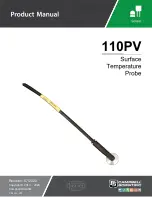
Curtis 1243
GEN
2 Manual
12
2 — INSTALLATION & WIRING:
Throttle
Current Sources As Throttles
A current source can also be used as a throttle input, wired as shown in Figure 7.
A resistor, R
throttle
, must be used to convert the current source value to a voltage.
The resistor should be sized to provide a 0
–
5V signal variation over the full
current range.
The Pot Low Fault parameter (see Section 3, page 38) must be set to Off;
otherwise the controller will register a throttle fault and will shut down. It is the
responsibility of the vehicle manufacturer to provide appropriate throttle fault
detection in applications using a current source as a throttle.
Fig. 8
Wiring for 3-wire
potentiometer throttle
(“Type 2”).
1
k
Ω
–
1
0
k
Ω
Pot Wiper input
(Pin 6)
Pot Low input
(Pin 7)
Pot High output
(Pin 5)
FASTER
Fig. 7
Wiring for current
source throttle (“Type 2”).
3-Wire Potentiometer (1k
Ω
–10k
Ω
) Throttle
A 3-wire pot with a total resistance value anywhere between 1 k
Ω
and 10 k
Ω
can
be used, wired as shown in Figure 8. The pot is used in its voltage divider mode,
with the voltage source and return being provided by the 1243
GEN
2 controller.
Pot High (Pin 5) provides a current limited 5V source to the pot, and Pot Low
(Pin 7) provides the return path. If a 3-wire pot is used and the Pot Low Fault
parameter (see Section 3, page 38) is set to On, the controller will provide full
throttle fault protection in accordance with EEC requirements. Note: the Pot
Low pin (Pin 7) must not be tied to ground (B-).
R
throttle
I
source
B-
B-
0–5V input
(Pin 6)
Pot Low Fault setting = OFF
☞
















































